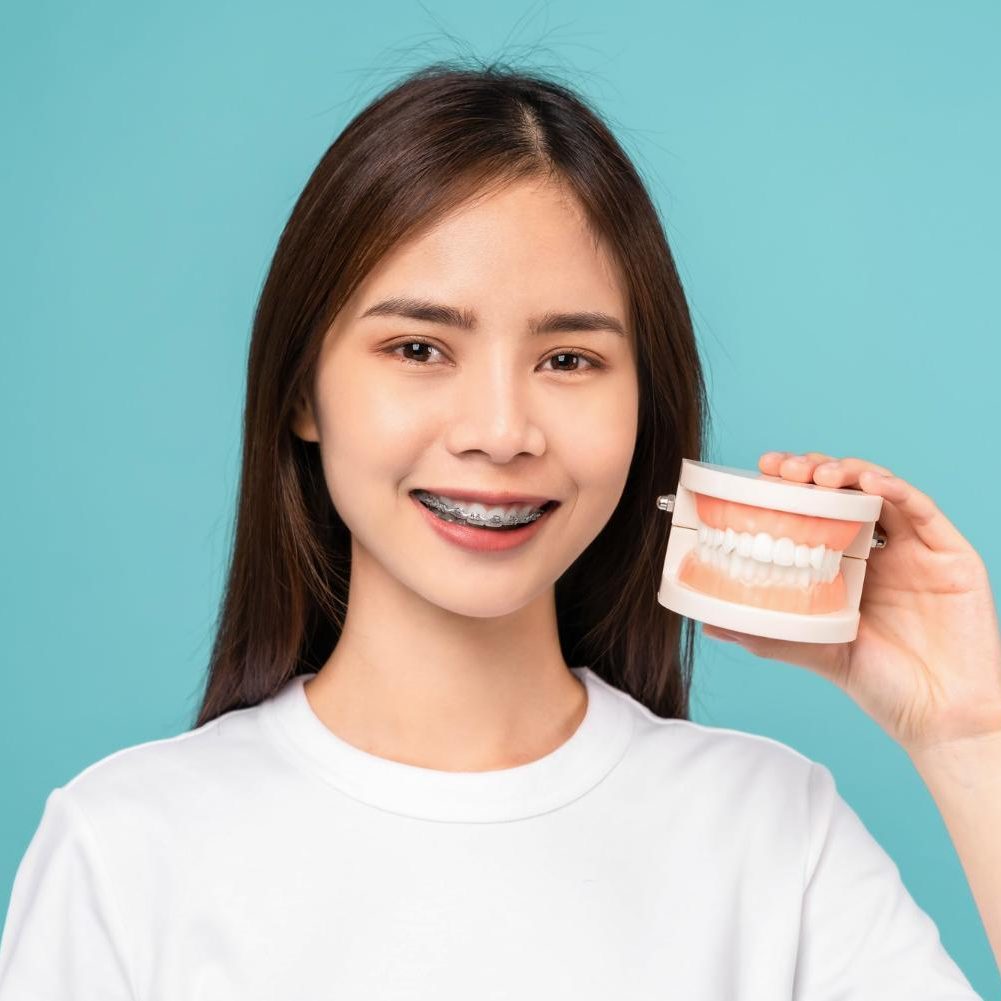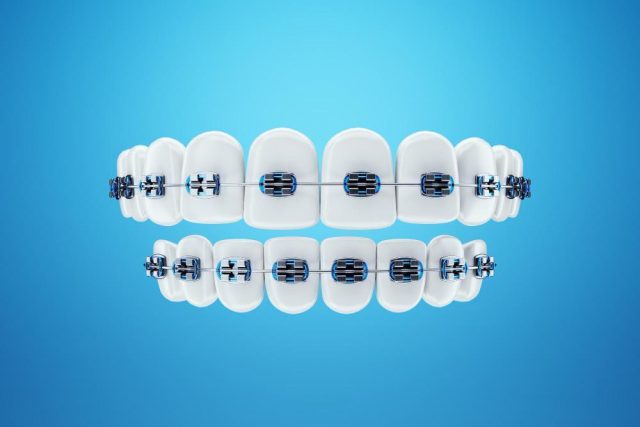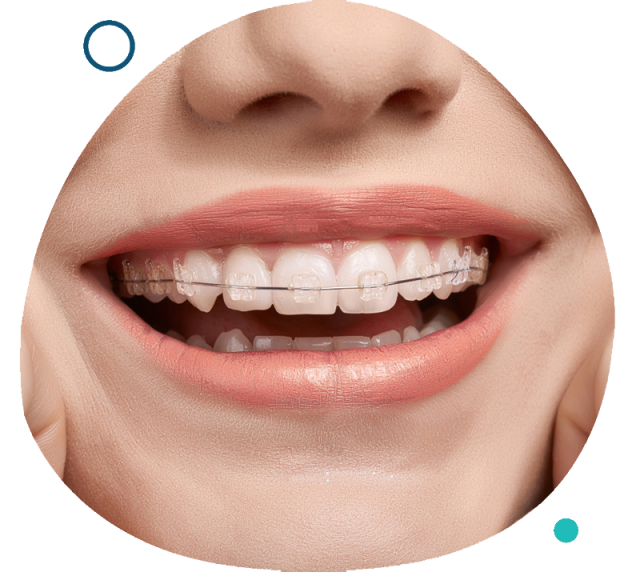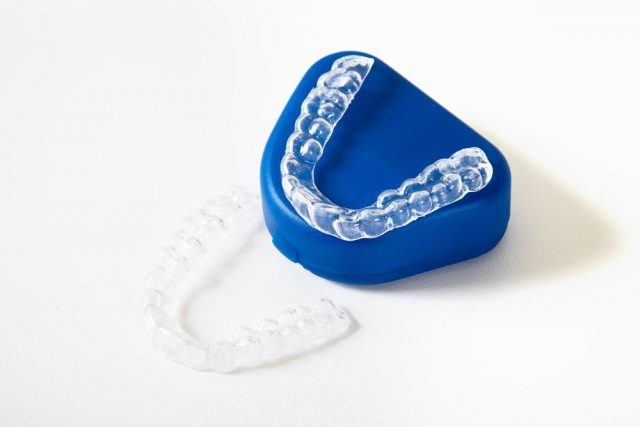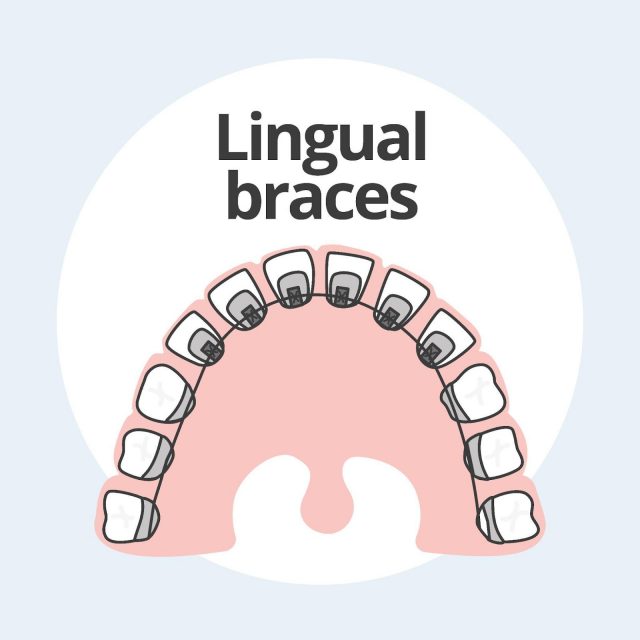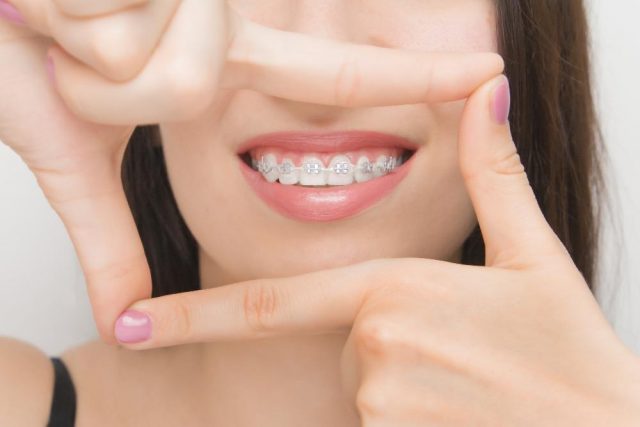Braces are tools that can help you with a variety of dental issues, including teeth misalignment, crowded teeth and position of your jaw. They can fix multiple issues including crooked teeth, bite issues and gaps between your teeth.
One significant concern for this dental treatment is the price. Students frequently postpone orthodontic treatment until they are adults due to the high cost. However, braces are not always pricey. There are several affordable choices available.
At The Braces Practice, we are happy to help both school and college students with their braces journey. Our clinic and experts are dedicated to providing them with affordable and highest standard dental care.
In this article, we will go through how much braces cost in Singapore, what factors influence them, and what benefits they bring. For further information, please feel free to contact our clinic.
How Do Braces Work?
Braces consist of several components that work together to straighten and align teeth. The main components of braces include:
Brackets: These are small, square-shaped metal or ceramic attachments that are bonded to each tooth. Brackets serve as the anchors for the other components of the braces.
Wires (Archwires): Wires are threaded through the brackets and are responsible for exerting pressure on the teeth. As the orthodontist adjusts the wires periodically, it helps guide the teeth into the desired position.
Bands: Molar bands are metal rings that are placed on the back molars. They provide an anchor for the braces and are usually essential for the proper functioning of the appliance.
Elastics or Rubber Bands: These are sometimes used to apply additional force to specific teeth or jaw areas. They are attached to hooks on the brackets or wire and help in aligning the bite.
Spacers or Separators: These are small rubber bands or metal appliances that are placed between the back molars a week or two before the bands are attached. They create space for the placement of bands.
Ligatures or O-rings: These are tiny rubber bands or wires that secure the archwire to the brackets. They come in various colours, allowing for some personalisation of the braces.
Hooks: Some brackets have small hooks to which elastics can be attached, providing additional force to move specific teeth.
Braces work by gently pushing your teeth into the right position through consistent pressure. They get adjusted regularly to make sure the pressure stays just right as your teeth shift. This whole process helps fix problems like crooked teeth, gaps, and underbites (where lower teeth are in front of upper teeth). The result? A straighter, healthier smile!
Braces For Students in Singapore
Traditional Metal Braces
Traditional metal braces are the most recognizable type of braces. They consist of metal brackets bonded to the teeth and connected by a wire. Elastic bands, often in various colours, hold the wire in place. Metal braces are known for their durability, effectiveness, and cost-effectiveness. While they are more conspicuous than other options, advances in design have made them smaller and less noticeable than in the past.
Benefits:
- Suitable for all age groups.
- Highly effective in correcting complex dental issues.
- Affordable compared to some other options.
Considerations:
- Visibility of metal brackets.
- Potential for discomfort or irritation.
Ceramic Braces
Ceramic braces work similarly to traditional metal braces, except they use tooth-coloured or clear ceramic brackets. This makes them less obvious, providing a more cosmetic choice for those who are concerned about the appearance of metal braces.
Benefits:
- Less visible than traditional metal braces.
- Effective in treating a wide range of dental issues.
- Durable and resistant to staining.
Considerations:
- Ceramic brackets may be more prone to breakage than metal.
- Slightly more expensive than metal braces.
Invisalign
Invisalign represents a revolutionary approach to orthodontic treatment. Instead of brackets and wires, Invisalign uses a series of clear, custom-made aligners that gradually move the teeth into the desired position. These aligners are removable, allowing for easier oral hygiene and the ability to eat without restrictions.
Benefits:
- Virtually invisible.
- Removable for eating, brushing, and flossing.
- Comfortable and generally well-tolerated.
Considerations:
- Not suitable for severe orthodontic issues.
- Requires commitment to wearing the aligners as directed.
Other Braces for Students
Lingual Braces
Lingual braces are custom-made and placed on the backside of the teeth, making them virtually invisible from the front. This type of braces is an excellent option for individuals who want the effectiveness of traditional braces without the visible appearance.
Benefits:
- Virtually invisible from the front.
- Suitable for all age groups.
- Effective in treating various orthodontic problems.
Considerations:
- Lingual braces may be challenging to clean.
- They can be more uncomfortable initially due to proximity to the tongue.
Self-ligating braces
Self-ligating braces are a modern alternative to traditional braces. These braces use a specialised clip or door to hold the archwire in place, eliminating the need for elastic bands. This design allows for smoother tooth movement and may result in less friction and discomfort.
Benefits:
- Reduced friction may lead to faster treatment.
- Easier to clean than traditional braces.
- No need for elastic bands.
Considerations:
- Typically more expensive than traditional braces.
- Limited colour choices compared to traditional braces.
What Affects the Cost of Braces?
While the benefits of braces are undoubtedly appealing, it’s essential to consider the financial aspect. Here’s a breakdown of the costs involved:
Types of Braces
There’s a variety of braces to choose from, each with its own price tag. Traditional metal braces are typically more budget-friendly, whereas clear braces or invisible aligners might command a slightly higher cost.
Complexity of the Case
The severity of misalignment or bite issues can impact the complexity of the case. More complex cases may require additional time and resources, influencing the overall cost.
Treatment Duration
The duration of your braces journey can influence the overall cost. Longer treatment periods may require more adjustments, translating to additional visits to your orthodontist.
Insurance Assistance
Don’t forget to explore the possibility of dental insurance coverage. Check if your family’s insurance plan extends its support to cover a portion of the braces expenses.
Payment Plans
If the upfront cost seems daunting, many dental clinics offer flexible payment plans. This allows you to spread the financial burden over time, making the investment more manageable.
How Much Do Braces For Students Cost?
|
|
Metal Braces |
Ceramic Braces |
Invisalign Braces |
Self-Ligating Braces |
|
Cost |
From $4,360 |
From $5,500 |
From $5,123 |
From $5,123 |
|
Pros |
|
|
|
|
|
Cons |
|
|
|
|
Benefits of Braces For Students
Here are some of the key benefits of braces:
A Straight Smile’s Marvel
Braces work wonders in straightening teeth, transforming a once misaligned set into a symphony of perfect alignment. Picture it as a magical makeover for your teeth, enhancing your smile’s aesthetic appeal.
Confidence Boost
With aligned teeth, confidence takes centre stage. Bid farewell to concerns about gaps or overlapping teeth when showcasing your radiant smile. Braces contribute to a positive self-image, boosting your overall confidence.
Chew with Ease
Braces address issues like overbites and underbites, making chewing a breeze. Enjoy your favourite snacks and meals without the discomfort of misaligned bites. It’s a win-win for your taste buds and dental health!
Speech Improvement
Misaligned teeth can sometimes impact speech. Braces can come to the rescue by gradually correcting these issues, leading to improved pronunciation and communication skills.
Correction of Bite Issues
Braces can be used to correct various bite issues, such as overbites, underbites, crossbites, and open bites. Addressing these problems can improve the way the teeth come together, preventing issues like jaw pain, headaches, and abnormal wear on tooth surfaces.
Enhanced Oral Health
Properly aligned teeth are easier to clean and maintain. With braces, it becomes easier to brush and floss between teeth, reducing the risk of tooth decay and gum disease. Improved oral hygiene can contribute to better overall oral health.
Prevention of Long-Term Problems
Addressing orthodontic issues with braces at an early age can prevent potential long-term dental problems. By guiding the development of the teeth and jaw, braces can contribute to a healthier oral structure.
Prevention of Tooth Wear
Misaligned teeth can cause uneven wear on tooth surfaces, leading to premature wear and tear. Braces help distribute the forces evenly across the teeth, preventing excessive wear.
Braces for Students FAQs
What are the cheapest braces in Singapore for students?
Metal brackets are the cheapest type of braces, starting from $4,360.
What is the minimum age for braces in Singapore?
There is no set age for getting braces but the Association of Orthodontists Singapore recommends that all children between the ages of 7 and 8 get an initial dental screening. However, most patients begin treatment between the ages of 12 and 14, after their baby teeth have been fully replaced by adult teeth.
What is the best age to get braces?
The American Association of Orthodontists recommends an orthodontic screening at age 7. For most children, a good time to start braces is from age 11-12 onwards. The exact age depends on your child’s growth, teeth eruption and dental development.
For some kids, however, it would be advantageous to start treatment at an earlier age to target growth issues.
Parents, you can look out for this sign. Click here to see actual pictures of the different bites.
Is placing braces painful?
The procedure of placing braces is painless. Watch how it’s done.
It is a non-invasive procedure which does not involve any local anaesthesia. It takes between 45 minutes to 1 hour for the placement.
The teeth will start shifting within a few hours to a few days after the braces are placed. You may experience varying degrees of discomfort initially when the teeth start to shift but it will subside within 1 week.
How long do students typically wear braces?
Each individual has varying degrees of complexity. An average treatment duration is 1.5 to 2 years. Each individual has varying degrees of complexity. An average treatment duration is 1.5 to 2 years.
Will I be able to eat and talk normally with braces?
Yes, you will be able to speak normally!
We would strongly encourage you to stay away from hard, crunchy, chunky and sticky foods. Examples are nuts, ice cubes, hard cookies etc.
You will be able to enjoy regular foods such as meat, vegetables, rice and noodles.
Can I still play sports?
Yes, of course!
However, we highly recommend using a heat-moldable sports mouthguard during contact sports.
What is the payment like? Can I pay in instalments?
Yes, there is an interest-free installment plan for all our braces services. The down payment is paid on the visit your braces are placed on, and this is followed by a monthly installment amount.
For full details on the installment plans for our braces service, please Contact Us or WhatsApp Us.
Conclusion
In conclusion, braces for students in Singapore offer a multitude of benefits, both in terms of aesthetics and oral health. Understanding the associated costs and preparing for the journey ahead will empower you to make informed decisions regarding your dental well-being. Embrace the benefits, navigate the costs wisely, and get ready to showcase your radiant smile to the world! Book your appointment now!

